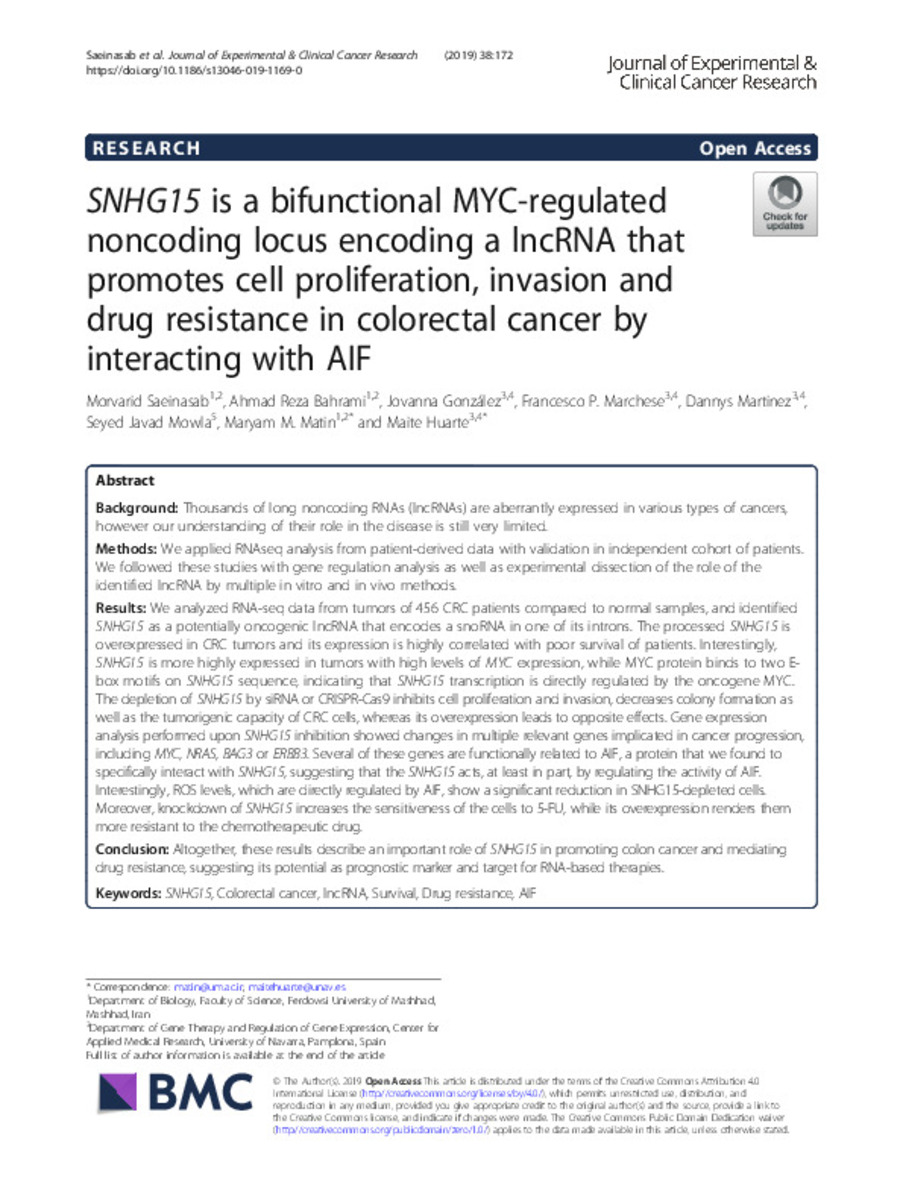SNHG15 is a bifunctional MYC-regulated noncoding locus encoding a lncRNA that promotes cell proliferation, invasion and drug resistance in colorectal cancer by interacting with AIF
Palabras clave :
Materias Investigacion::Ciencias de la Salud::Oncología
AIF
Colorectal cancer
Drug resistance
SNHG15
Survival
lncRNA
Fecha de publicación :
2019
Editorial :
Springer Science and Business Media LLC
Nota:
This article is distributed under the terms of the Creative Commons Attribution 4.0 International License (http://creativecommons.org/licenses/by/4.0/).
In the original publication of this article, the Funding section needs to be revised, and the corrected Funding section appears below. We apologize for any confusion this may have caused.
Cita:
Saeinasab, M. (Morvarid); Bahrami, A.R. (Ahmad Reza); Gonzalez-Rojas, S.J. (Sandra Jovanna); et al. "SNHG15 is a bifunctional MYC-regulated noncoding locus encoding a lncRNA that promotes cell proliferation, invasion and drug resistance in colorectal cancer by interacting with AIF". Journal of Experimental & Clinical Cancer Research. 38 (172), 2019, 1 - 16
Aparece en las colecciones:
Estadísticas e impacto
0 citas en

0 citas en

Los ítems de Dadun están protegidos por copyright, con todos los derechos reservados, a menos que se indique lo contrario.








